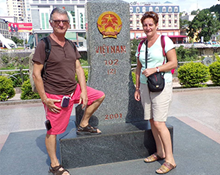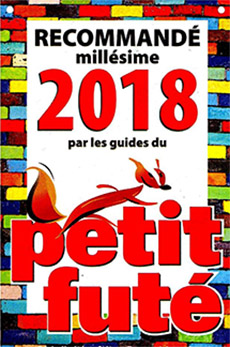- Home
- OUR ITINERARIES
- GUIDEBOOK
- VIETNAM HISTORY
- USEFUL INFORMATIONS
- BEFORE DEPARTURE
- VISIT HA LONG BAY BY SEAPLANE
- MOST BEAUTIFUL BEACHS IN VIETNAM
- GEOGRAPHY & CLIMATE IN VIETNAM
- VIETNAM CULTURE
- NIGHT IN HOMESTAY
- CRUISING IN VIETNAM
- ACCOMMODATION & ADVISES
- BEACH, SNORKELING & DIVING HOLIDAY
- TRAVEL WITH FAMILY
- GOLF
- DOMESTICS FLIGHTS
- OFF THE BEATEN TRACK TOUR
- SITES TO DISCOVER
- ABOUT US
- CUSTOMIZED TOUR
OVERNIGHT IN HOMESTAY
Staying with the locals in Vietnam
Homestay in Vietnam: meet the local populations and live a real experience of solidarity in Vietnam!
A trip to Vietnam, which includes hiking in regions inhabited by minorities and a few days with locals, is the pledge of a rich experience. You will travel by meeting the local population in the heart of natural landscapes, with a view to cultural sharing and a deeper understanding of daily life.
Staying with locals means discovering the incredible diversity of Vietnam through its people and cultures. The houses are often rustic and the standards of comfort are far removed from Western habits, but you will live a unique experience of sharing, the intensity and richness of which will remain etched in your memory forever.
Why this formula?
Staying overnight with locals doesn't just mean "sleeping". Above all, it is taking the time to observe and participate in the daily life of local populations. You will discover their way of life, their traditions and their history. You will also be required to participate in some daily tasks such as preparing a meal for example. This opportunity will allow you to learn to cook specialties of the country. And the wealth will also be the happiness that comes from a meal shared with the family.
On foot or by bike, you will visit the villages (pagodas, communal houses, Confucian or Taoist temples, family houses of worship) and thus get to know the inhabitants.
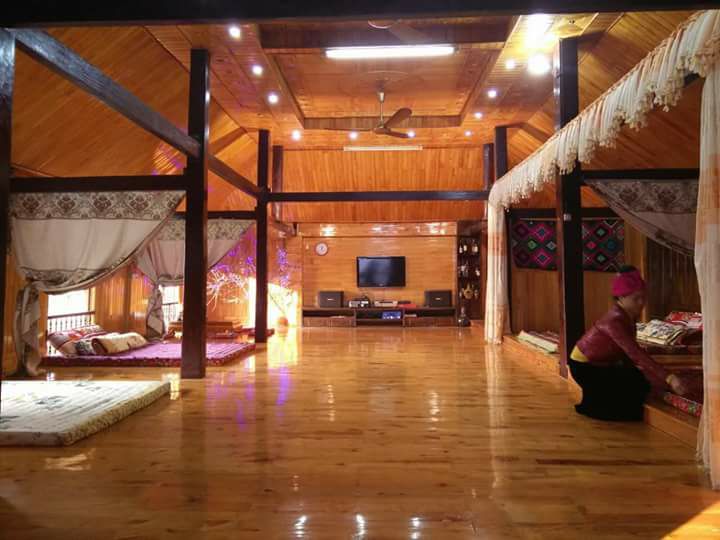
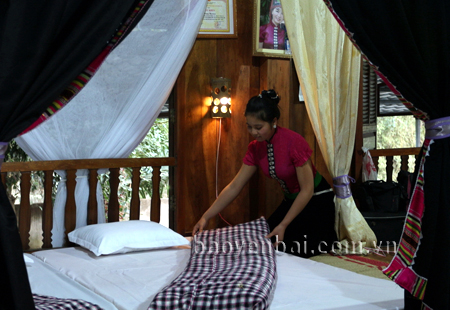

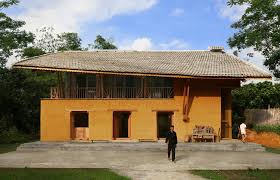
Living conditions at the inhabitant:
Before spending the night with a local family in Vietnam, it is necessary to understand exactly what conditions you will encounter while sleeping in a common house. Some will be amply satisfied with this comfort, others may find it too spartan for their liking. This is why if you decide to experience the night at a homestay in Vietnam, you should know that:
These are common wooden or bamboo houses, most often on stilts, with the main living room upstairs. The houses are more or less decorated, more or less "beautiful" according to the ethnic groups and the social level of each family.
The large room serves as a common space for everyone, for activities during the day.
The shower rooms and toilets are outside the house. They are very basic but quite practical for the basic necessities with a European shower and toilet (with a seat).
Spaces are created just before going to bed, so everyone has their own mosquito net and most often curtains can be hung up to give more privacy.
We sleep in this main room all together on soft bunks. They are obviously not beds, it’s quite comfortable, but again everything is relative. Pillows and blankets are available to everyone. In some houses, you can sleep in a separate room if the house is large, or even in a neighboring house.
As the family cooks themselves, we obviously have the option of attending the cooking and participating in it if we feel like it. The kitchen being most of the time in an annex room of the house.
Meals are mostly taken in the same room. In a friendly manner, we sit in a circle, seated on the floor to share the meal with the host family. Depending on the season and on the families and houses, the meal may be taken elsewhere, such as under the house on stilts, so we all sit together around a large table on chairs.
When you spend the night with locals, you have to adapt to the life of the villagers and not the other way around. The villagers get up early to go to work, so as soon as the sun rises life is heard in the village. So you have to be prepared to hear the animals wake up and sometimes even hear them during the night. In short, don't be surprised to hear roosters, dogs and their fellows early in the morning. And even sometimes (increasingly rare), depending on the region and the location of the house, we may be entitled to morning radio propaganda relayed by the loudspeakers that still exist.
How's it going ?
Your guide remains essential as an interpreter and also to make you perceive the subtleties of this culture. He will accompany you to the local homes, which are here more than elsewhere, a place of daily life. During your hikes, we will ask them to accommodate you for one or two nights. These houses are chosen according to their size, the panorama offered, the hygienic conditions and the sincere wishes of the hosts.
In most cases, the houses are on stilts, accessible by stairs. This is the way of life of the high mountain tribes, in order to avoid the risk of probable floods. The materials are wood and bamboo in general. The selection criteria take into account the ease of access, magnificent views and the presence of a river. Because the water is not channeled into these homes and this offers you the necessary comfort for your toilet as well as for washing your dishes or your laundry.
In these shelters, there are mattresses, mosquito nets and blankets available in winter. As soon as you arrive, we will install them together for the night.
In the center of these residences (sometimes on stilts), there are large rooms where community life takes place. You will sleep there either together or separately. It depends on the customs of each region visited. Because this room where you sleep is also a sacred place of worship for the local gods and their ancestors. So as visitors welcomed in these places, you owe it to yourself to respect the customs of your hosts who may prohibit intimate relationships between couples, because according to them these practices undermine respect for the family.
Where can you find this type of accommodation? What additional activities can I do?
* Homestay in North Vietnam
1. Places
There are several different places you can stay and sleep with locals. But most of the discovery tours of the remote mountain ethnic groups in northern Vietnam are ideal for this type of accommodation in terms of authenticity and friendliness, compared to thevery places of Vietnam. From Nghia Lo, Mu Cang Chai, Sapa, Bac Ha, Ha Giang, Ba Be, Mai Chau, to Pu Luong, you will see vast landscapes of great beauty and you will get closer to the ethnic groups, in order to know in the best possible way their way of living. In these places you will meet very few Westerners.
2. Suggested activities associated with nights with the locals
- Visit colorful ethnic markets where the typical characteristics of the minorities of the mountainous regions of North Vietnam are hidden.
- Go on hikes or walks around the villages to learn about the customs, traditions and traditional crafts of the Hmong, Dzay, Tay, Nung, Lolo ...
- Taste typical specialties of minorities in the North.
- Take a bike ride on the picturesque paths to contemplate the rice terraces, the neighboring villages as well as the daily life of the local population and make friendly encounters.
- Discover the music and traditional dances of ethnic minorities such as the Thai ethnic group.
- Navigate on the lake, you can go kayaking there and, with the Tây, you can participate in certain secular activities and thus immerse yourself in their universe.
- Share meals with ethnic groups and live to the rhythm of the villages with less tourist frequency.
* Homestay in South Vietnam
1. Places
You can also go to Buon Ma Thuot (Highlands), Lac Lak (Highlands), Can Tho, Vinh Long, Cai Be ... to sleep in the bungalows, communal houses, walk on the backs of elephants like the local ethnicities… but it is not easy to do it alone because for foreigners, you need permits and, in some places, a local guide.
2. Suggested activities associated with nights with the locals
- Participate in a cooking class with the host family.
- Take walks in the hamlets to meet the locals.
- Bike ride in the surrounding countryside or through rice fields and vegetable crops or coconut fields and orchards.
- A cruise on the Mekong river with a visit to the floating markets to discover the life and river activities of the inhabitants living on the banks of the Mekong, to taste tropical fruits as well as local specialties.
- Visit nursery villages, the brickyard, a family candy factory with coconut ...
- Participate in a local market where you will shop with your cook, you will meet the local people with their warm welcome.
Some tips for homestay accommodation
Although host families have the necessary conditions to welcome clients, it is a little less pleasant to stay with a local family in winter, especially in northern Vietnam. It is therefore necessary to provide some warm clothes for the months of November to February, but a little wool is enough in October, March or April.
In addition, it is better that you bring with you a sleeping bag (in case), a bath towel, a personal toiletry bag (cream & toothbrush, shampoo, ..). If your trip falls in the winter in the North (November to March), it is best that you take 1 "warm" and a "light" sleeping bag for the other months.
Informations
GUIDEBOOK
AVANT LE DEPARTAdd: Quat Dong, Thuong Tin, Ha Noi INTERNATIONAL TOURISM LICENSE
Tel / whatsapp : +84 976 255 369 No : 01-1157/2018/ TCDL-LHQT
ZEN VIETNAM TRAVEL, A Branch of Thuong Tin Tourist
© Copyright from ZEN VIETNAM TRAVEL






